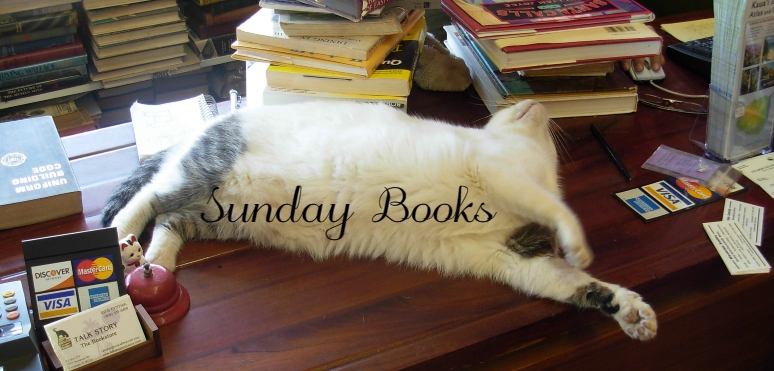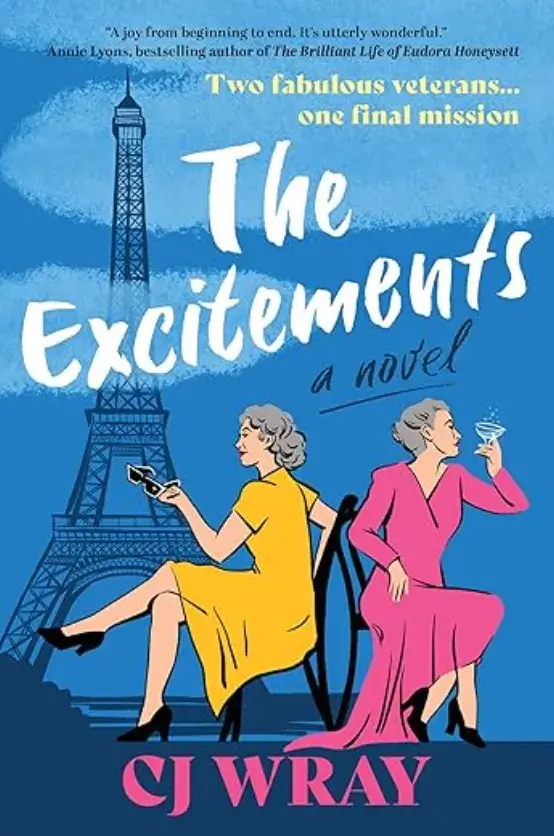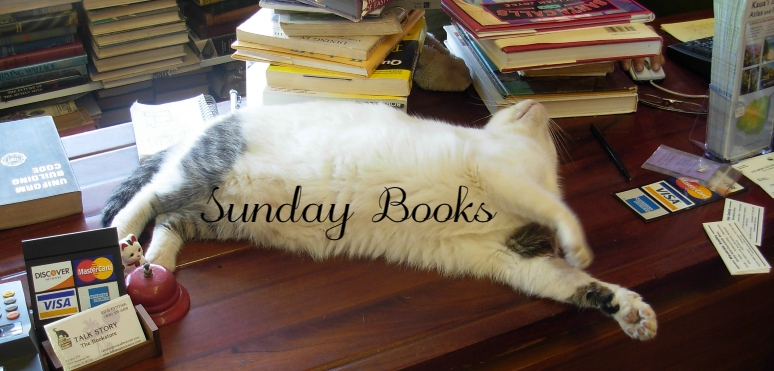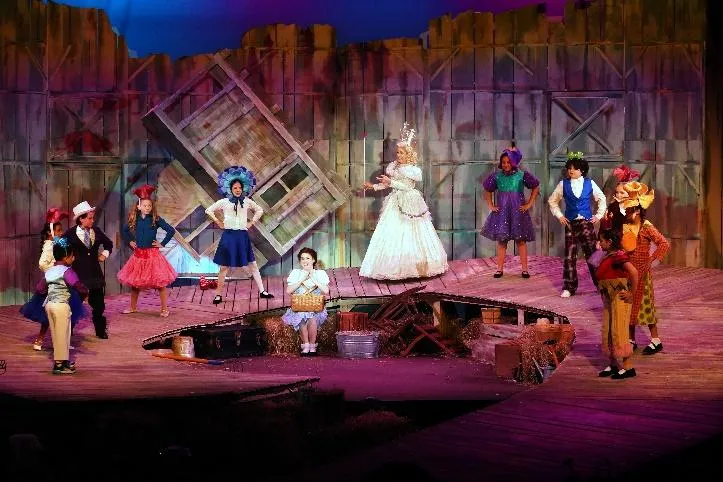
Riverside Theater’s production of this classic is ‘an adaptation of an adaptation of a major revision of a novel.’ Does it work? Does it ever.
The Wizard of Oz is a true American success story. The original novel by L. Frank Baum and many of the early adaptations passed into public domain long ago, along with the 13 sequels that Baum gifted to the world.
Since then, the classic MGM movie adaptation has replaced so many of the books’ details that it has become the canon. How many people remember Dorothy’s silver slippers? Anyone?
The story changed, the characters changed, the dialogue changed, but as MGM says in the intro card to the movie’s opening credits: “Time has been powerless to put its kindly philosophy out of fashion.”
The movie’s music is also iconic, and it’s not just the songs. All you need to do is hum “ta-DAH-ta-DAH ta-DAH YA” to evoke a wicked witch in party conversation.
So what appears on the stage at Riverside Center is an adaptation of an adaptation of a major revision of a novel. Is the “kindly philosophy” still there? I’m happy to let you know it’s not only there but amplified and moves at a pace that is now missing from the 1939 movie.
Making Magic
So Dorothy is a girl who has a problem. Her dog has caused a stir by biting a neighbor, and now Miss Gulch has threatened to have Toto put down. Dorothy finds herself with only one way out as far as she can tell: to run away from her Kansas home.
Her escape is stopped by a sudden tornado that leaves her unconscious and helpless. True to the movie, the initial scenes are costumed and decorated in a warm sepia that fades as we enter the world of Dorothy’s unconscious dream.
In the movie this is achieved by Technicolor.
The magic of modern staging fulfills similar goals with rainbow-colored costumes, projections, and lighting effects. It’s the staging’s motif that all of the environments and properties in Oz are simply colorized and redecorated versions of Kansas.
The set is a swirl of platform that rises to the back wall of the stage; as with everything else in Kansas, it starts gray and tan, then morphs easily into a number of locations by lighting change and staging locations.
The show uses “concert staging:” highly energetic acting, choreography, costuming, and creative staging to take the place of realistic performance.
Riverside’s production carries out concert staging on The Wizard of Oz with mostly genius level concert staging tricks. Most often these tricks work. All that a movie uses are synchronized sounds and images, and we’re used to seeing a movie.
So, if a friendly old lady is knitting her way through a tornado, or some men are rowing a boat through the air, or a cow flies by, it works as well on a stage projection as it does in a movie projection. The same with the Emerald City; projected on the upstage wall, it becomes a solid reality for the characters, and we see it through their eyes (as in the cover photo).
Movie illusions are combined to create a single effect as in the witch’s explosive exit from Munchkinland: there is a bang, a huge puff of smoke, in the smoke we see the witch turning around, and when the smoke is gone so is the witch.
Synchronize the witch theme (“ta-DAH-ta-DAH ta-DAH YA”). Magic!
It’s a little less magic if we get the smoke and the turn and see the witch leaving the stage as a door in the set opens for her. We see the door and the actor exiting in full light. In Hamilton we see a similar action but are not invited to dwell on the magic of a disappearing character. In Wizard the magic is the point, it’s how the characters solve impossible problems (“People come and go so quickly here!”). Mostly the magic works, sometimes it doesn’t.
However, since the performances sell us on the manic magic of a masterful set of performances, we forgive and accept it. And the performances are masterful. And charming. And wonderfully over-the-top.
An Cast and Ensemble Worthy of a Classic
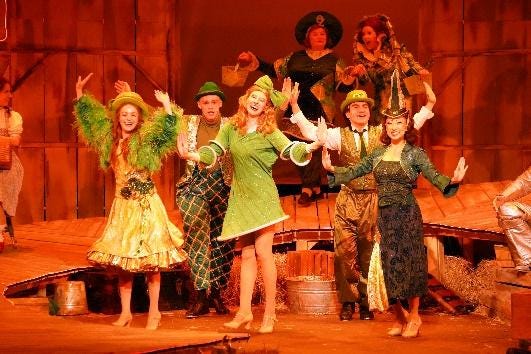
The cast includes many familiar faces to the Riverside stage. Most of the casting choices follow the movie’s plan, which gives each Oz character a Kansas counterpart so that Dorothy’s fantasy world reflects her real-life tornado trauma; Oz is a consequence of her injuries from the storm.
There are some changes, almost all for the better. Uncle Henry, film version, disappears from the scene from the beginning to the end. In this version, the Uncle Henry actor in Dorothy’s Oz becomes the cranky, officious guard, who in the movie is played by the actor playing Oz. (In fact, in the movie, it appears that the Wizard is the only one in Oz who is working to hold the City together, playing five different roles).
In the stage version, the Uncle Henry/Guard is a guide who leads the quartet through their Oz adventure and becomes as much a protector as Auntie Em.
The Munchkins are an incredibly talented group of child actors, performing mostly in tight harmonies and charming the audience with high-energy vocals.

The Winkies (the uniformed guards marching to “The Song of the Volga Boatmen”) are a marvel of precision and are wonderfully redeemed after the demise of the witch.
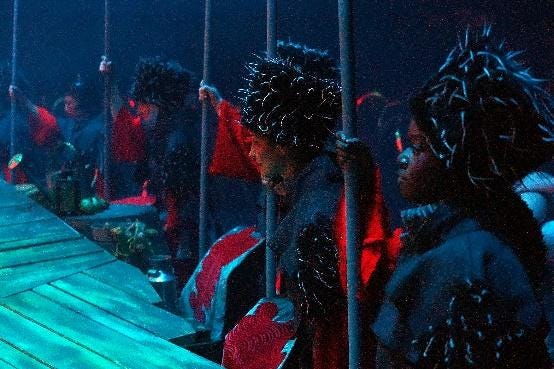
Toto Is Adorable — and A Solid Actor
Sammy the dog plays Toto with great timing and good training. Seasoned theater-goers may have a jaundiced eye to having live animals onstage, but Sammy doesn’t disappoint.
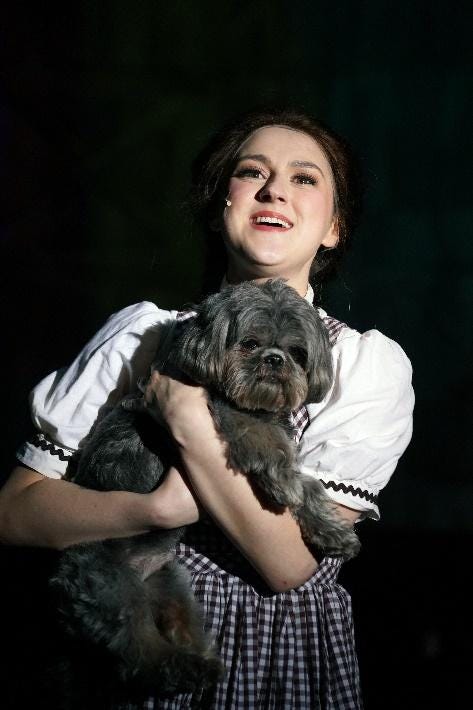
Dorothy, Scarecrow, Tin Man, Lion, and More
On the human side, the actors give us performances that are assured and nuanced and wonderfully wacky. Rebecca Carroll’s Dorothy is as charming as Judy Garland’s, but Judy remained the same from beginning to end. We watch Rebecca learning and growing emotionally through the performance. Her voice is strong, clear and true on “Somewhere Over the Rainbow,” and the reprise of the song in the Witch’s castle shows us a very different take on Dorothy’s confusion in the first go-round of the song. This Dorothy is innocent but can learn.

Larry Toyter’s Scarecrow is so highly energized you wonder why Ray Bolger gets such good press. Loose limbed, check. Uses five moves to take a step when anyone else uses two, check. Infectious goofy facial expressions, check. Obvious lack of brain, yup, it’s all there. His Crows offer a nice, snarky introduction.
Ariel Messeca’s Tin Man holds up favorably to Jack Haley’s Tin Man. This guy clearly has a heart even though one doesn’t beat in his chest. The Trees who sing him into the scene won’t cut him a break.
Jordan B. Stockdale’s Lion is given a great character buildup, given that he has not only his solo intro but also is allowed to clown through “If I Were King.” And yes, there’s a very subtle and sneaky Lion King tie built in that pleases greatly.
I’d be remiss not to remember the three women in Dorothy’s life, Auntie Em (Andrea Kahane), Almira Gulch/The WWW (Kathy Halenda), and Glinda the Good (played by Colleen Kleveno when I saw it). Each of these is a teacher in one way or another: Auntie Em teaches nurturing and unquestioning acceptance, Gulch teaches that unpleasant people may have a point that is unarguable, and Glinda teaches self-reliance and a realistic outlook to unpleasant circumstances.
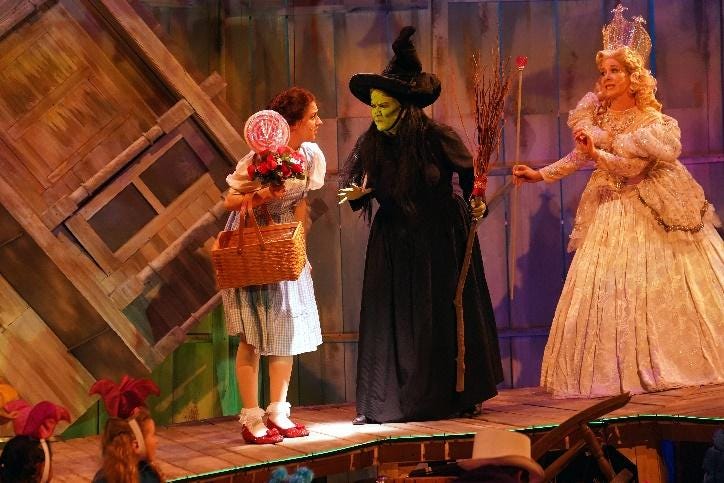
Each actor gives a credible acting performance, with Glinda’s lovely soprano spearheading the Munchkinland sequence and returning to lead the Optimistic Voices that lead us out of Act I.
I don’t think that The Wizard of Oz receives enough credit for what it does with its female characters: the most influential voices in Dorothy’s life, symbolizing a loving home, adversity, and pure good are adult women. All three characters are played with energy and to put it simply, backbone by the actresses. The Wizard, even though he’s the title character, actually has no ability to help or hinder Dorothy’s success.
And I’ve already mentioned Uncle Henry/Emerald City Guard (Ian Lane) who starts off in both of his incarnations as an oaf and ends up receiving redemption as a loving protective figure in Dorothy’s life.
All of these updated adult roles are far greater influences in the Royal Shakespeare Company’s adaptation than in the original movie, again reinforcing more strongly the commitment to the magic fable behind the show’s plot.
The ensemble is made up of a chorus that is arranged and rearranged into several groups through clever staging and wonderful costumes. In particular, the youngest members of the cast-except for maybe Sammy-play the Munchkins with a clarity, energy, and precision that both charms and impresses. (I found myself wishing that the balance from the amplified sound could allow more of the kids’ excellent diction to rise above the orchestration, but that’s just me being picky.)
The adult groups bring the rest of Oz to life with verve, concentration, and wonderful precision. I was especially impressed by the Crows, the Trees, and the Winkies who were allowed to shine as characters on their own.
And Then There’s the Music …
A word about the songs: many don’t start the way you’re probably used to. Where the movie has the songs begin with the chorus, here they begin with an introductory verse that beautifully sets up the personal conflict that the song expresses emotionally. Each of the intros for the quartet (“Somewhere Over the Rainbow” and the three “If I Only Had…” songs) receives this treatment. I found myself commenting under my breath that I hoped it would happen each time and was really pleased that it did.
There are some other welcome additions, cut in the final theatrical release of the movie and lost over the years. The most obvious one is the “Jitterbug” song and character. Used by the Witch of the West to attack the quartet in the Haunted Forest by making them dance themselves to death, these villains sing a number that is fast, brassy, and toe-tapping. The intensely choreographed dance number that accompanies it bounces right along, and it fills a plot hole that the editing process left out of the movie. But then, in 1939, who expected a fantasy musical movie to make dramatic sense? Fortunately the RSC adaptation brings it home with a lot of brains, a lot of heart, and a lot of nerve.
Performances continue through July 14, so there are plenty of chances to see it. It’s a perfect early summer evening (and the food’s really good, if you choose to eat before the performance).
You really should go and see this show, especially if you’ve seen the movie a thousand times — it will inspire nostalgia but amplify your love of the story.
Credits
- Background music by Herbert Stothart
- Music and Lyrics by Harold Arlen and E.Y. Harburg; Dance and Vocal Arrangements by Peter Howard
- Original Orchestration by Larry Wilcox
- New Orchestration by Brian Allan Hobbs
- Adapted by John Kane for the Royal Shakespeare Company
Dennis Wemm is a retired professor of theatre and communication, having taught and led both departments at Glenville State College for 34 years. In his off time he was president and sometimes Executive Director of the West Virginia Theatre Conference, secretary and president of the Southeastern Theatre Conference, and generally enjoyed a life in theatre.

Local Obituaries
To view local obituaries or to send a note to family and loved ones, please visit our website at the link that follows.

Support Award-winning, Locally Focused Journalism

The FXBG Advance cuts through the talking points to deliver both incisive and informative news about the issues, people, and organizations that daily affect your life. And we do it in a multi-partisan format that has no equal in this region. Over the past month, our reporting was:
$8 a month supports great journalism
- First to report Mary Washington Healthcare’s move to close Kid’s Station Daycare
- First to detail MWHC’s taking actions that undermine the viability of the Moss Free Clinic.
- First to detail and then expose the controversy surrounding the Riverbend High School swim team
- Providing the region’s best political coverage of the upcoming 7th District Congressional race.
For just $8 a month, you can help support top-flight journalism that puts people over policies.
Your contributions 100% support our journalists.
Help us as we continue to grow!


